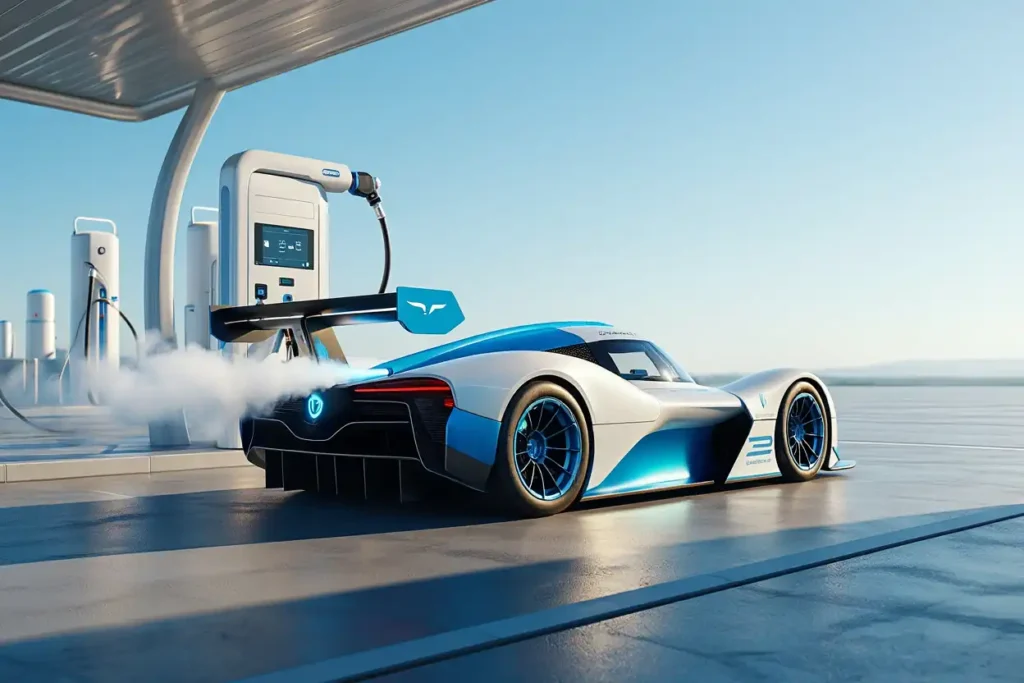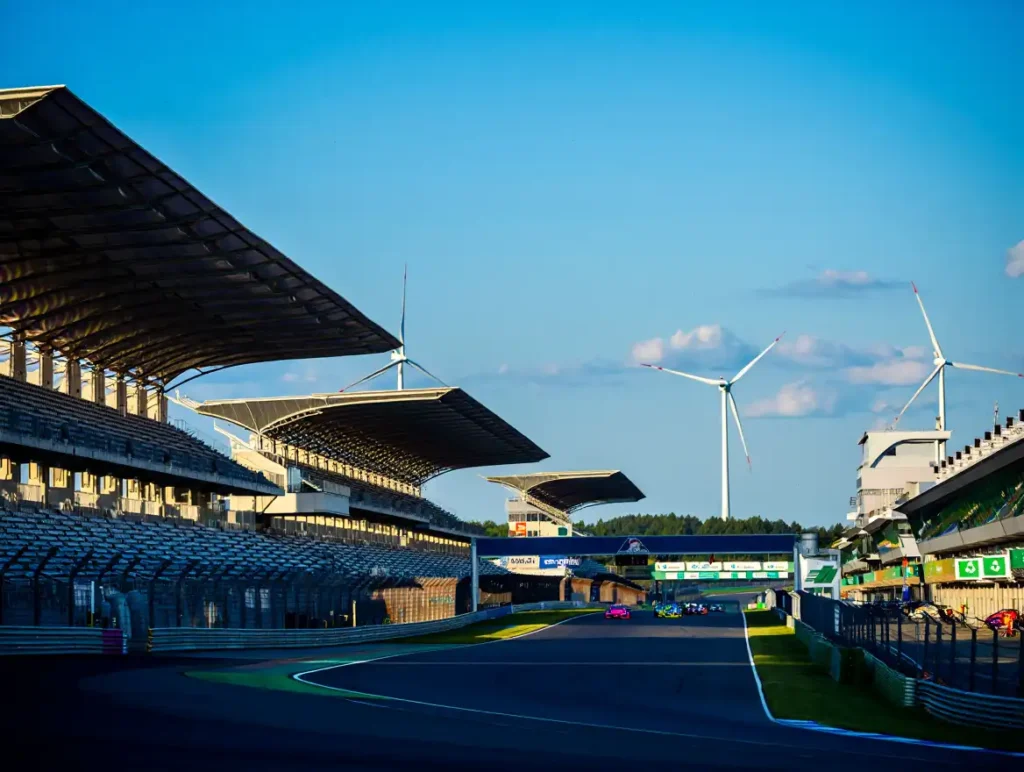Motorsport has long been a symbol of innovation, speed, and technical mastery. From Formula 1 to grassroots racing, the industry has consistently pushed the boundaries of what is possible in automotive engineering. Yet today, racing faces its most significant challenge: reconciling its passion for performance with the urgent global need to combat climate change. This evolution is bringing forth new technologies and philosophies, centered around hydrogen, electric vehicles (EVs), and carbon offset programs, all under the umbrella of sustainability in motorsport.

The Shift Toward Green Racing
Historically, motorsport has been associated with high emissions and resource consumption. Race cars guzzle fuel, logistics require fleets of planes and trucks, and large events produce significant waste. Critics have questioned whether racing can ever truly be sustainable. However, the sport’s influence on the wider automotive industry means that its innovations often shape the future of road cars. From disc brakes to hybrid drivetrains, what begins on the track often finds its way to city streets.
In 2025 and beyond, the motorsport industry is redefining itself. Racing is no longer only about speed; it’s also about efficiency, responsibility, and innovation that contributes to a greener future. Let’s break down the three major pillars — hydrogen, EVs, and carbon offsets — while also exploring the broader ecosystem of sustainability in motorsport.
Hydrogen: Powering the Next Generation of Racing
Hydrogen is increasingly being discussed as a cornerstone of green racing. Hydrogen fuel cell vehicles (FCEVs) generate electricity by combining hydrogen with oxygen, producing only water vapor. This makes them a zero-emissions solution at the point of use.
Advantages of Hydrogen in Racing
- Fast Refueling: Unlike EVs that require significant charging times, hydrogen cars can refuel in minutes, much like traditional gasoline vehicles.
- Lightweight Systems: Hydrogen fuel tanks can be lighter than massive EV batteries, allowing for better weight distribution and performance balance.
- Endurance Potential: The quick refueling makes hydrogen attractive for endurance races, where pit stop times matter.
Challenges of Hydrogen Racing
- Infrastructure: Hydrogen refueling stations are scarce, especially in remote racing locations.
- Production Methods: Most hydrogen today is “gray hydrogen,” produced from fossil fuels. For hydrogen to be sustainable, it must be “green hydrogen,” created using renewable energy sources.
- Safety Concerns: Hydrogen storage requires advanced safety systems, given its highly flammable nature.
Despite these challenges, projects like Mission H24 at Le Mans are proving that hydrogen-powered racing cars can perform at competitive levels. By 2030, we may see entire categories dedicated to hydrogen endurance racing.
Electric Racing: Leading the Charge
Electric racing has already carved out a strong presence in global motorsport. The launch of Formula E in 2014 was met with skepticism, but it has since grown into a championship supported by major automakers like Mercedes, Jaguar, and Nissan. It has become a testing ground for EV battery technology, aerodynamics, and energy efficiency.
Benefits of EV Racing
- Zero Tailpipe Emissions: Electric race cars produce no direct carbon emissions.
- Urban Racing: Reduced noise pollution allows races to take place in city centers, bringing motorsport closer to fans.
- Technology Transfer: Advances in EV racing batteries and drivetrains directly benefit the consumer EV market.
Limitations of EV Racing
- Battery Constraints: Heavy batteries limit speed and race length.
- Charging Times: Rapid charging technology is advancing, but still lags behind the instant refueling of traditional fuel or hydrogen.
Beyond Formula E, Extreme E has combined EV technology with environmental advocacy. By racing in ecologically sensitive areas, the series highlights the urgency of climate change while showcasing EV capabilities in rugged conditions. This makes EV racing not only a technological showcase but also an awareness platform.
Carbon Offsets: Striking a Balance
Even with hydrogen and EV innovations, motorsport cannot escape its carbon footprint entirely. International logistics, event energy demands, and manufacturing all produce emissions. That’s where carbon offset programs play a crucial role. These initiatives involve investing in renewable energy, reforestation, or carbon capture projects to neutralize emissions.
Formula 1 has pledged to reach net-zero carbon by 2030, a goal that includes sustainable fuel development, reducing logistics emissions, and significant investment in carbon offsetting. While some critics argue that offsets are a temporary fix, they represent an important accountability tool while the industry transitions to greener practices.
Beyond the Cars: Logistics and Event Sustainability
Sustainable racing goes beyond what happens on track. Logistics is one of the largest contributors to motorsport’s carbon footprint. Transporting cars, equipment, and personnel across continents is energy-intensive. Teams are beginning to use more efficient shipping methods, optimized travel schedules, and renewable energy-powered headquarters to reduce emissions.
Events themselves are also becoming greener. Race organizers are introducing recycling programs, banning single-use plastics, and powering facilities with renewable energy. Tracks are investing in solar panels, energy-efficient lighting, and water recycling systems to reduce their environmental footprint.
Case Studies in Sustainable Racing
Formula 1’s Net Zero 2030 Goal
Formula 1 has committed to becoming carbon neutral within the next decade. This includes introducing sustainable fuels, optimizing logistics, and ensuring that all events meet strict environmental standards. Hybrid engines already showcase improved efficiency, and F1 is exploring synthetic and biofuels to further reduce emissions.
Extreme E’s Eco-Awareness Model
Extreme E not only races electric SUVs in harsh environments but also partners with scientists to study local ecosystems. Each race site is paired with a “legacy program” — initiatives that leave a positive environmental impact, such as mangrove restoration or renewable energy installations.
Le Mans Hydrogen Prototype
The 24 Hours of Le Mans has long been a proving ground for innovation. The Mission H24 program is developing hydrogen race cars that will compete in future endurance events, showcasing hydrogen’s potential for high-performance applications.
Fan and Sponsor Perspectives
Fans are increasingly aware of sustainability issues. Surveys reveal that younger fans, in particular, value environmental responsibility. This shift is influencing how sponsors engage with motorsport. Brands want to align themselves with green innovation, making sustainability not just an ethical choice but also a commercial one.
For sponsors, motorsport offers a unique opportunity to demonstrate leadership in green technologies. Companies investing in EVs, hydrogen, and renewable energy view racing as the perfect platform to highlight their innovations to a global audience.
 The Road Ahead: What to Expect by 2030
The Road Ahead: What to Expect by 2030
Looking forward, the future of sustainable racing is both challenging and exciting. By 2030, we can expect:
- Entire racing categories dedicated to hydrogen fuel cell vehicles.
- Advances in ultra-fast EV charging that allow electric endurance racing.
- Synthetic and biofuels replacing fossil fuels in hybrid categories.
- Carbon offsetting becoming fully integrated with fan engagement — allowing fans to contribute directly to sustainability projects.
- Circuits powered entirely by renewable energy sources.
Key Takeaways
- Hydrogen racing is emerging as a powerful option for endurance categories, though infrastructure remains a hurdle.
- Electric racing has already proven itself through Formula E and Extreme E, driving innovation in battery technology.
- Carbon offsets are bridging the gap as motorsport transitions toward a sustainable future.
- Logistics and events must become greener, not just the cars themselves.
- Fans and sponsors are demanding accountability, making sustainability a cultural as well as a technical necessity.
Conclusion
Sustainability in motorsport is no longer an optional conversation — it is the defining challenge of this generation of racing. From hydrogen-powered endurance prototypes to the electric spectacle of Formula E and the carbon offset commitments of Formula 1, the industry is charting a path toward responsibility without sacrificing excitement. As we approach 2030, motorsport has the chance to prove that speed and sustainability can coexist, inspiring innovations that benefit both racing and everyday mobility.
For more insights into sustainable motorsport, explore the FIA’s Sustainability Program, which outlines global strategies for making racing greener.

 The Road Ahead: What to Expect by 2030
The Road Ahead: What to Expect by 2030